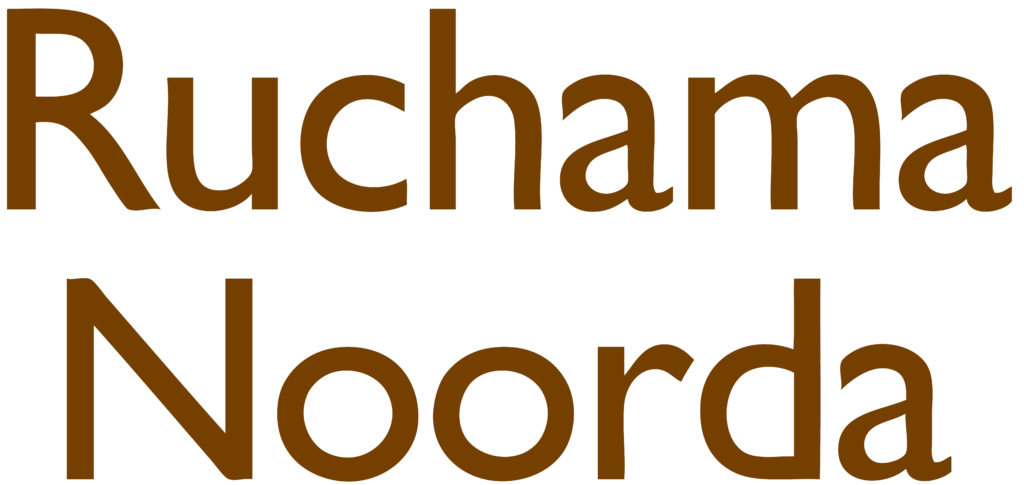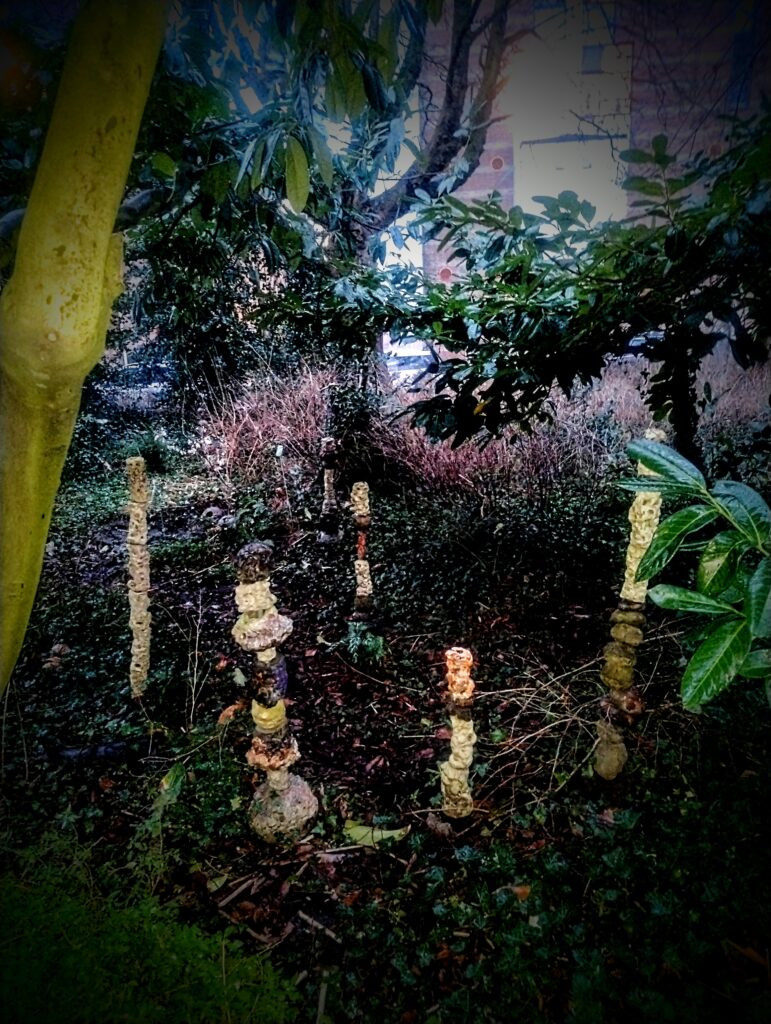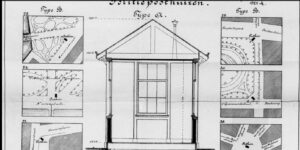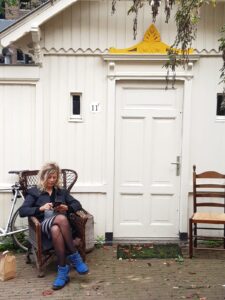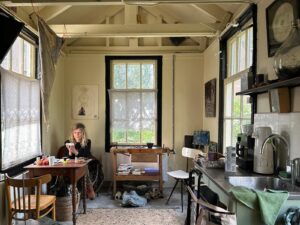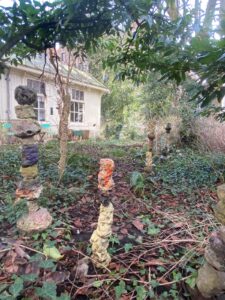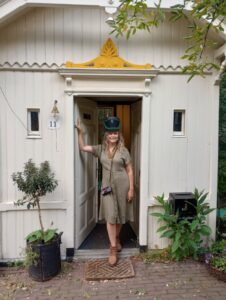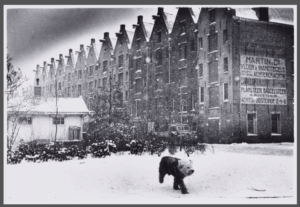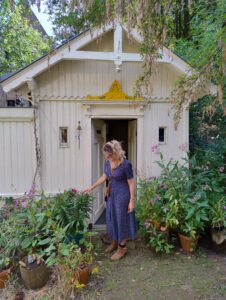ELFENVOORTUIN
Where elves and witches meet.
Amidst the greenery, sculptures whisper forgotten tales.
Inspired by a lost fairy tale
and the legend of the Achtergracht,
this garden is a living artwork
by Ruchama Noorda.(Leiden 1979 – Amsterdam 2024)
At the end of 2022, Ruchama received the key to her dream studio: a small wooden house in the style of a Swiss chalet, tucked away in the heart of the city. On one side, a canal; on the other, a public garden.
Ruchama transformed part of this green space into a living artwork inspired by the legend of the Achtergracht and a forgotten folk tale. One of her first gestures was to create an enamel nameplate for the door.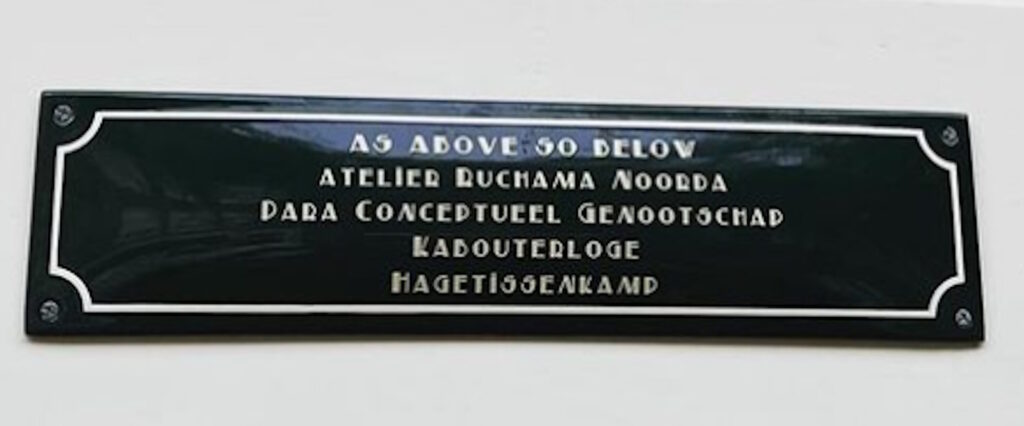
Deeply aware of the site’s history, she commissioned research into the original color palette of the former police post—affectionately known as “the little white house.” Thanks to her efforts, the municipality restored it to its historical colors in 2025.
Some crucial inspirations behind the name ELFENVOORTUIN for Ruchamcme from the following: .
The Legend of the Achtergracht
In the 18th century, a skipper moored his ships along the Achtergracht, only to find them mysteriously unmoored at night by playful elves. One night, he caught one of them. In exchange for its freedom, the elf gave him 20 gold coins. With this fortune, the skipper built 13 warehouses: twelve named after the months of the year, and the thirteenth after the elf—Zon (Sun)—a name still visible on the building today.
https://nl.wikipedia.org/wiki/Achtergracht_(Amsterdam)
Baba Jaga
“Ruchama likened her studio to the hut of Baba Yaga, the powerful witch of Slavic folklore. Baba Yaga, guardian of life-giving springs, embodies female strength and independence. She dwells in a magical hut that spins wildly on chicken legs, adorned with garlands of bones and skulls. In more ways than one, the comparison resonates: photographs show Ruchama at work, crafting ephemeral sculptures from wood and mud, smeared with clay, stirring pots and lighting fires.”.
(NRC januari 2025, Janneke Wesselink) https://www.nrc.nl/nieuws/2025/01/10/voor-ruchama-noorda-1979-2024-bestond-er-geen-onderscheid-tussen-leven-en-kunst-a4878849
In Slavic mythology, Baba Yaga is a wild woman and a mistress of magic. She is sometimes viewed as a forest spirit leading a host of spirits.
Her studio was housed in a former police post—designed in the charming chalet style by the Municipal Public Works Department—which deeply captured her imagination and sense of historical awareness.
The Former Police Post
The former police post on the Achtergracht is a municipal monument dating back to 1897. In 1913, it was relocated here from its original site on the Hemonylaan. Classified as a “type B” post—smaller than the one on the Nieuwezijds Voorburgwal—it was decommissioned in 1924. Over the years, it served various purposes: a city gardening depot, a community office, and later an artist’s studio.
From 2022 to 2024, it was used by artist Ruchama Noorda, who passed away in October 2024. At her initiative, the building was restored to its original color scheme in May 2025.

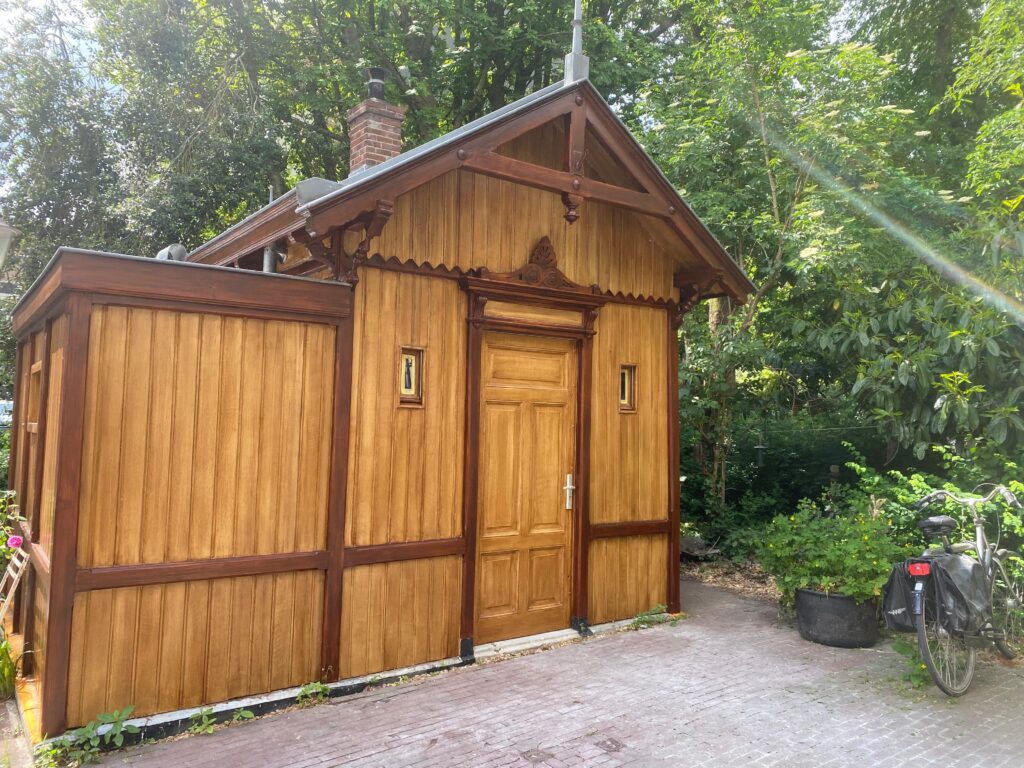
https://onsamsterdam.nl/artikelen/politie-in-buurthuisjes
https://amsterdamopdekaart.nl/1850-1940/Achtergracht/11F
Public Works and the Chalet style (1851-1978)
The Municipal Department of Public Works (PW- Dienst der Publieke Werken) was established around 1850 to centralize the maintenance of municipal buildings and waterways. It built upon earlier urban institutions such as the Stadsfabryckambt (City Construction Office).
By 1900, PW had gradually taken on a growing number of responsibilities, including the management of municipal utility services. Its scope eventually expanded to include sewers, bridges, buildings, urban development, and even the maintenance of public clocks. In 1916, it was decreed that all municipal buildings were, in principle, to be designed by PW.
In 1935, the Department of Urban Development—under the leadership of Cornelis van Eesteren—presented the General Expansion Plan (Algemeen Uitbreidingsplan), which guided the growth of Amsterdam well into the post-war years. In the 1950s, the department also oversaw major traffic infrastructure projects within the city center.
Due to the city’s explosive growth—from 270,000 residents in 1870 to 725,000 in 1927—the demand for infrastructure, schools, sports grounds, and police stations increased dramatically. PW played a central role in meeting these needs. The 1920 School Act, which made municipalities responsible for school housing, made school construction one of the department’s core tasks.
In 1978/1979, the Land Management and Urban Development departments were split off, and from 1980 onward, the remaining entity continued as the Department of Public Works (Dienst Openbare Werken).
The Chalet Style is a romantic architectural style that became popular around 1900 in countries such as Germany, the Netherlands, Norway, and Iceland. It was inspired by traditional farmhouses in the mountainous regions of Switzerland, Savoy, and Tyrol. The rise of this style was closely tied to the 19th-century elite’s fascination with the perceived purity and simplicity of Alpine life.
Architects of the time enthusiastically responded to these nostalgic ideals, and in Amsterdam, many utility buildings were constructed in this style. Though typically built in brick rather than wood, they often featured hallmark elements such as overhanging roofs, ornamental wooden details, and timber-frame accents.
Ruchama, like the early Public Works architects, was deeply inspired by this style and era—a connection clearly reflected in her dissertation and artistic practice.
https://www.lunenberg.info/zwitserse-huisjes-in-amsterdam
